There are several ingredients that I tend to see being demonized over and over again. These things seem to go in a cyclical fashion on social media. All of a sudden a popular account will share misinformation about a specific ingredient and then others just copy and paste onto their own social media pages without fact checking from a reputable source first.
I’ve covered most, if not all of these, in individual posts throughout my social media pages, but I thought it might be helpful to have one document with a bunch of them that you can refer back to if you see any misinformation being spread about them.
This isn’t an exhaustive list by any means, but these are the ones I continue to see over and over again despite how many times myself and others have attempted to clear up the misinformation and confusion by sharing accurate information about them.
I also want to note that there are valid reasons for avoiding any of these ingredients, including allergies and sensitivities or just simply not preferring the taste or texture, so this certainly isn’t to say that everyone should or needs to consume all of these ingredients either. But if you are avoiding any of them due to unnecessary fears, hopefully after reading through this you’ll be better equipped to make those decisions based on facts rather than false claims.
These are 5 of the most misunderstood and often-maligned ingredients — not listed in any particular order:

1. Monosodium Glutamate (MSG)
Monosodium glutamate (MSG) is the sodium salt of the common amino acid, glutamic acid, which is naturally present in our bodies and is in many foods and food additives. The same savory, “umami” flavor that MSG contributes can be found in foods such as tomatoes, parmesan cheese, and mushrooms, which contain naturally occurring glutamate, the deprotonated form of glutamic acid. The glutamate in MSG is chemically indistinguishable from glutamate present in food proteins, and our bodies metabolize both sources in the same way. Although this ingredient gets demonized quite a bit based on anecdotes and a xenophobic history, the large body of evidence just doesn’t support the many symptoms attributed to it.
“Chinese restaurant syndrome,” and other ailments claimed to be caused by MSG are not backed by the decades of research. After anecdotal reports of MSG inducing “Chinese restaurant syndrome,” a study that examined 17 males and seven females, between 18 and 34 years old in a double-blind, crossover challenge (the “gold standard” for testing potential adverse reactions to a substance) found no difference in subjective symptoms observed between the MSG group and the control group. The study led to the conclusion that “Chinese Restaurant Syndrome” is an anecdote applied to a variety of postprandial illnesses; rigorous and realistic scientific evidence linking the syndrome to MSG could not be found.
Decades of research has also failed to demonstrate that MSG causes allergic reactions. Anecdotal reports may suggest that a small percentage of the population may be sensitive to MSG, with individuals reporting symptoms resembling some of those experienced with a food allergy, but no scientific research has been able to reliably show that consuming MSG causes these symptoms. MSG is one of the most intensely studied food ingredients in the food supply and has been found to be so safe that The Joint Expert Committee on Food Additives of the United Nations Food and Agricultural Organization and World Health Organization placed it in the safest category for food additives.
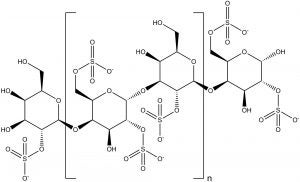
2. Carrageenan
Carrageenan is a naturally derived ingredient that is extracted from red seaweed and used to improve the texture and palatability of many foods and beverages. Many commonly consumed foods and beverages contain carrageenan, such as chocolate milk, ice cream and other dairy products, salad dressings, soy and almond milk, infant formula, and some meat products.
The reason for most of the misinformation surrounding carrageenan may surprise you. The studies referenced to show negative effects aren’t even using food grade carrageenan at all!
This review explains:
“Carrageenan has been proven safe for human consumption; however, there has been significant confusion in the literature between CGN and the products of intentional acid-hydrolysis of CGN, which are degraded CGN (d-CGN) and poligeenan (PGN). In part, this confusion was due to the nomenclature used in early studies on CGN, where poligeenan was referred to as ‘degraded carrageenan’ (d-CGN) and ‘degraded carrageenan’ was simply referred to as carrageenan.
“Although this nomenclature has been corrected, confusion still exists resulting in misinterpretation of data and the subsequent dissemination of incorrect information regarding the safe dietary use of CGN.”
Several human and animal studies have contradicted claims that carrageenan is carcinogenic and demonstrated its safety. These studies found no link between carrageenan consumption and various health conditions, including cancer and digestive and reproductive disorders.
In addition, claims of a link between carrageenan and inflammation of the digestive tract are based on a handful of flawed studies, and are therefore not relevant for evaluating the safety of carrageenan as it is currently used. These studies used excessively high doses of carrageenan that are not comparable to what someone would consume in a real-world scenario in addition to the fact that they were conducted using forms of carrageenan that are not used in foods or beverages.
More recent studies have not been able to replicate research that previously suggested that carrageenan in food causes intestinal inflammation.

3. High-fructose corn syrup (HFCS)
High-fructose corn syrup, otherwise known as HFCS, is used as a sweetener in many different foods from beverages to baked goods. A common misconception is that HFCS is “high” in fructose compared to most sweeteners, but the truth is that it’s only “high” in fructose compared to the corn syrup it was derived from, which is purely glucose.
You can see in the graphic below that HFCS-55 contains a similar ratio of fructose to glucose as both sugar (sucrose) and honey, and HFCS-42 is even lower in fructose than all of the other options. Pure sucrose is 50 percent fructose and 50 percent glucose, which is chemically bound. This chemical bond is rapidly broken down by the sucrase enzyme in the intestine, which releases fructose and glucose for absorption.
HFCS often gets confused with pure fructose, which it is not.
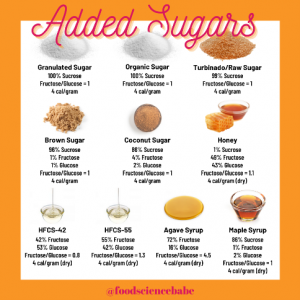
The claim that fructose is “toxic” is based on rodent studies that examine acute effects of incredibly high doses of pure fructose. Obviously this isn’t evidence of HFCS or even fructose being “toxic” or harmful to humans when consumed in realistic amounts because 1) we aren’t mice, 2) the doses used were many times more than humans would consume from foods, 3) HFCS is not pure fructose, 4) we typically consume these sweeteners in conjunction with other ingredients, and 5) HFCS contains similar or even lower amounts of fructose as regular sugar, honey, or the other forms of sugar listed above, so one would not expect HFCS to be any worse as compared to other types of sugar.
In fact, the studies comparing intake of sucrose, HFCS, and other similar sweeteners such as honey have found they exert similar metabolic effects. Here’s a 3 -part series of videos I did to explain more about HFCS and another article I wrote on it as well.
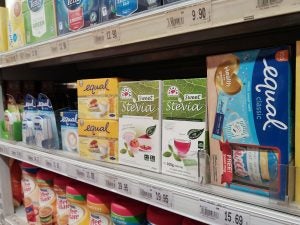
4. Aspartame and other artificial sweeteners
I’ve written about this topic in detail previously, so this is a summary of the common misconceptions regarding low-calorie sweeteners and specifically aspartame as that one seems to bear the brunt of the misinformation, at least currently.
Aspartame is made up of two amino acids — aspartic acid and phenylalanine and is about 200 times sweeter than sugar (sucrose). Aspartame contains four calories per gram just like sugar, but since it’s so much sweeter than sugar, very little is needed to provide the same sweetness.
Aspartame is broken down into aspartic acid and phenylalanine for use in protein synthesis and metabolism when ingested. A small amount of methanol (a compound naturally found in foods like fruits and vegetables and their juices) is also produced during digestion. Aspartame intake should be limited by people with phenylketonuria (PKU), which is a rare genetic disease that makes an affected person unable to properly metabolize phenylalanine.
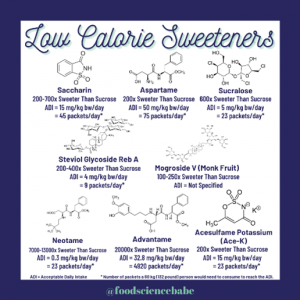
Data from randomized controlled trials support that substituting low-calorie sweetener options for regular-calorie versions leads to modest weight loss. Extensive research shows that sucralose does not raise blood sugar levels or otherwise affect blood glucose control in humans, and a recent consensus statement by experts in nutrition, medicine, physical activity and public health concluded that the use of low-calorie sweeteners in diabetes management may contribute to better glycemic control.
To date there is no strong evidence that low-calorie sweeteners, including sucralose, enhance appetite or cravings in humans, and some randomized trials have demonstrated the opposite effect — including a decrease in hunger and reduced dessert intake compared to those who drank water. Others have shown no effect on hormones that regulate hunger and fullness or on total energy intake and selection of sweet foods.
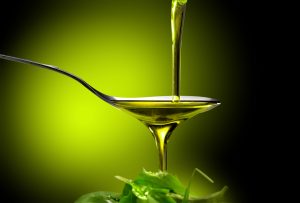
5. Vegetable oils, in particular canola oil
I don’t really understand the current demonization of certain seed and vegetable oils. Canola is apparently bad because of GMOs, hexane, and inflammation. At least these are the main reasons I’ve seen, but there’s really no merit to it being bad or something to avoid for any of these reasons.
We already know that transgenic crops are just as safe and nutritious as their non transgenic counterparts, but also, refined oils don’t even contain genetic material. So, those falsely claiming that it’s bad because of “GMOs,” aren’t only wrong because that’s just incorrect, but also because it literally doesn’t even contain “GMOs.”
OK, now the hexane thing. Yes, some oils are extracted using hexane, but there is virtually none left in the final product. Hexane has been used to extract oils from plant material since the 1930s. There is no evidence to substantiate any risk or danger to consumer health when foods containing trace residual concentrations of hexane are ingested. Refined vegetable oils extracted with hexane contain less than 1 ppm of residual hexane. It’s estimated that the level of ingestion of hexane from all food sources is less than 2 percent of the daily intake from all other sources, primarily gasoline fumes.
OK, so are vegetable oils “toxic” or “inflammatory”? In actuality, evidence strongly shows the opposite of these myths. Human trials consistently show that omega-6 fatty acids do not cause inflammation. High-quality observational evidence shows modest reductions in coronary heart disease rates by further decreases in saturated fat if replaced by a combination of poly- and mono-unsaturated fat, and the benefits of polyunsaturated fat appear strongest. In addition, because both omega-6 and omega-3 polyunsaturated fatty acids are essential and reduce risk of heart disease, the ratio of omega-6 to omega-3 is not useful and can be misleading. A recent prospective analysis showed that replacing butter and margarine with canola oil, corn oil, or olive oil was related to lower total and cardiometabolic mortality.
Steer clear of social media accounts and blogs that label foods or ingredients as “toxic,” “inflammatory,” “bad,” “unhealthy” or whatever else is the new trendy fearmongering word of the day. To present single foods or ingredients in this way is just not accurate. That’s not how food works. It’s always a lot more nuanced than that.
Chances are that if someone is making blanket statements about specific food groups or ingredients and telling you not to eat them, they either are very misinformed themselves or are just trying to sell you something. Fear sells, and unfortunately it’s an incredibly effective marketing tactic.
Food Science Babe is the pseudonym of an agvocate and writer who focuses specifically on the science behind our food. She has a degree in chemical engineering and has worked in the food industry for more than decade, both in the conventional and in the natural/organic sectors.



